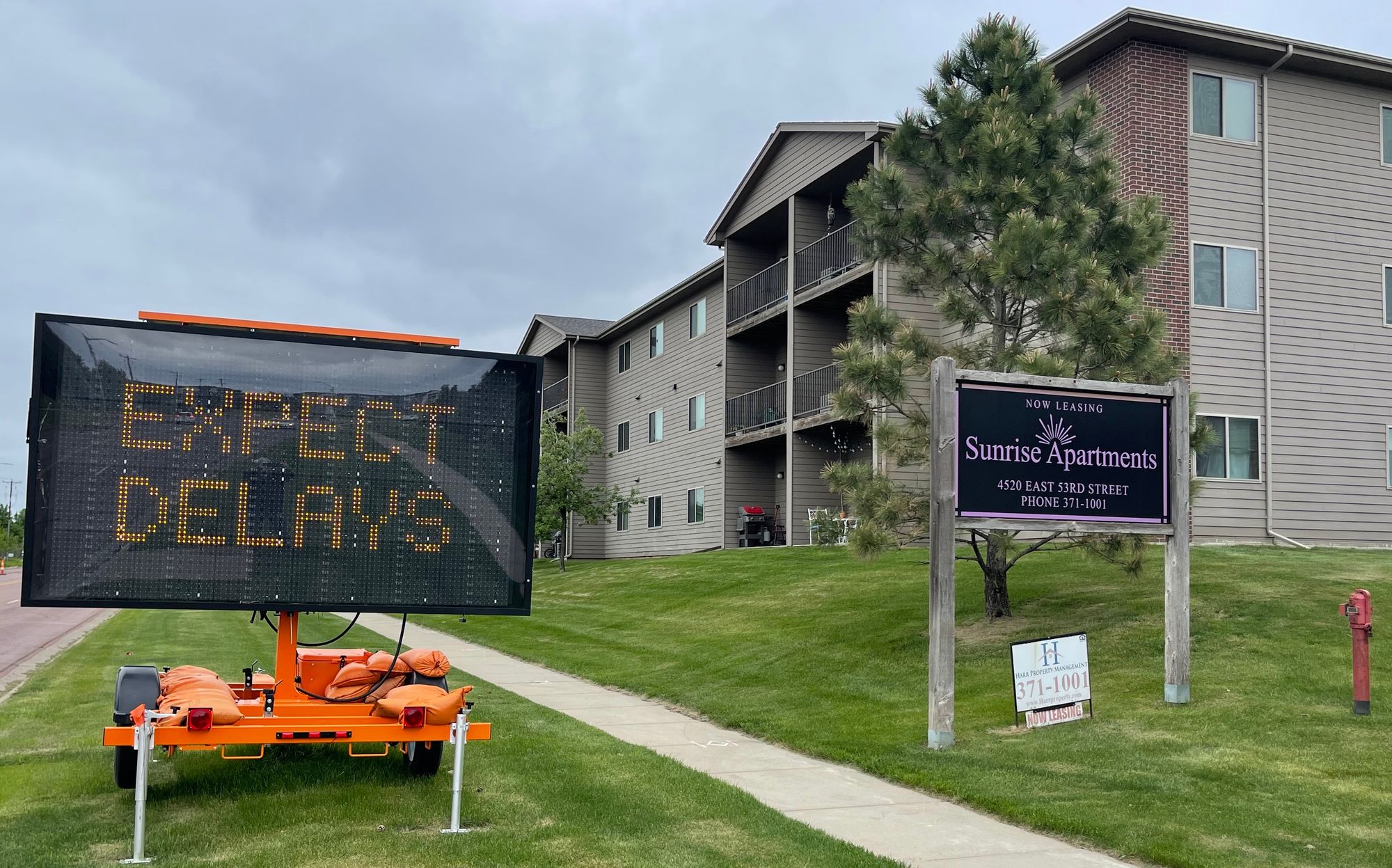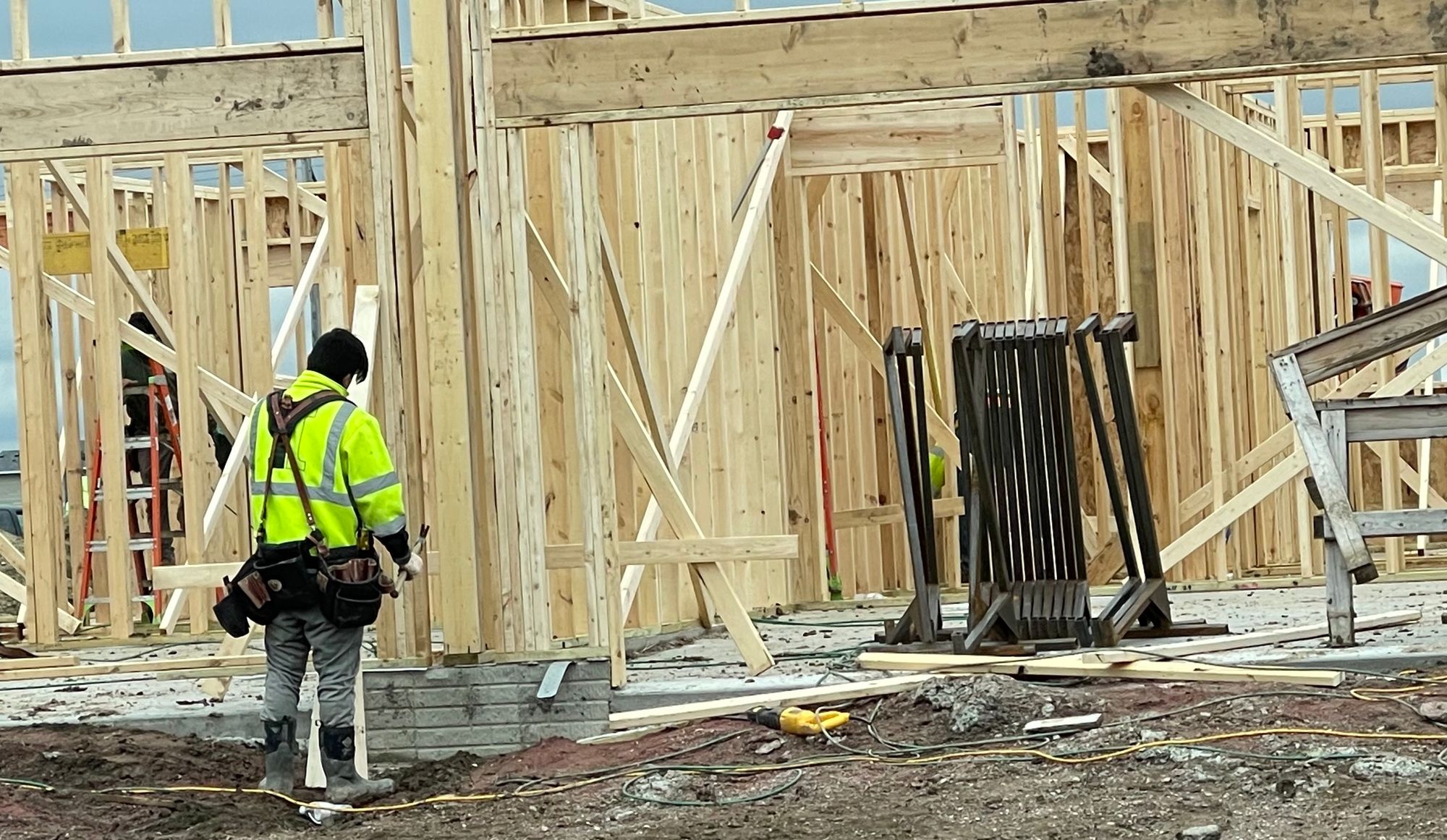Skyrocketing housing costs adding to financial burdens of renters in South Dakota
Steadily rising rents across South Dakota are adding further financial hardship to renters who are already facing record gas prices, rising costs for food and utilities and inflationary increases in the overall cost of living.
The rising rents are forcing some potential renters to make tough choices, such as taking on roommates, living longer with relatives or accepting housing with worse conditions or less space than hoped for.
Urban areas of South Dakota are seeing the biggest spikes in rents. The average rent for a 2-bedroom apartment in Pennington County is up 15% from 2020 to 2022, and the monthly cost is up 10% for renters in Meade, Minnehaha and Union counties during that two-year period. Several South Dakota counties are near or above $1,000 a month in average rent for a 2-bedroom apartment.
Rural areas of South Dakota have seen lower increases in average rents, but availability of rental housing is low in many small cities and towns.
The increased costs of housing comes at a time more people are seeking to move, including people making life changes after the pandemic, recent high school or college graduates, or those who seek new housing in the summer months.
Meanwhile, as has long been the case in South Dakota, there is a growing disconnect between average wages and the increase in rent and the overall cost of living. The spiking rents also come as availability of rental housing is low across the state, further challenging those who need housing.
Across the Midwest, monthly housing rates have gone up about 4.8% since April 2021. In April 2022, the average rent for a two-bedroom unit in South Dakota was about $750 a month, according to World Population Review. Meanwhile, the minimum wage has only increased $1.30 per hour in the last four years, though a workforce shortage has prompted many employers to pay well above minimum wage so far in 2022.

A sharp increase in demand and a short supply of available units are making rental housing a hotter and more costly commodity than in previous years in South Dakota. Part of this demand comes from households “separating” in the post-pandemic world of 2022.
Census data shows that the number of households in the U.S. increased by nearly 1.48 million in 2021 after a decrease of an estimated 130,000 households in 2020. Young adults moving out of family homes and those looking to live without roommates have contributed to this, making the 2020 to 2021 jump the highest in almost ten years.
The housing market in the U.S. has become extremely competitive and costly, turning away many first-time homebuyers and adding pressure to the rental market.
According to Zillow.com, mortgage and interest rates have made homes 53% more expensive that a year ago. The National Association of Realtors saw the average home price rise 17 percent in 2021.
The median list price for new homes in the Sioux Falls metro area was $295,000 in April, according to Realtor.com, an increase of 16 percent from 2021.
While still considered a buyer’s market with more supply than demand, Realtor.com shows the Rapid City median home list price tops Sioux Falls at $329,000, an increase of 20 percent over 2021.

The spike in home purchase prices has pushed an estimated one million prospective buyers into the competitive rental market.
The burst of potential new renters is also reducing availability of quality, affordable housing in both urban and rural areas of South Dakota.
Tillie Morrin, 19, spent most of a recent day driving around Rapid City with her fiancée and a friend trying to find a 2- or 3-bedroom apartment that was available and that they could afford.
Morrin and her roommates were trying to land an apartment for $1,000 or less per month.
“The hardest part is availability,” said Morrin, who works as a stocker at Walmart. “Today so far we’ve been to five or six places.”
The group found one 2-bedroom apartment available for $1,200 a month but kept on looking. “That’s a little high for us right now,” Morrin said.
Rents increased statewide from 2020 to 2022
This chart shows average rent increases in selected South Dakota counties from 2020 to 2022 for a 2-bedroom apartment in a multi-family complex.
County Avg. rent % increase 2020-2022
Pennington $1077 15%
Meade $1176 10%
Union $1071 10%
Minnehaha $932 10%
Davison $782 7%
Brookings $847 5%
Yankton $729 5%
Brown $863 4%
Beadle $545 4%
Lawrence $624 2%
Notes: Data shown for 2-bedroom units in multifamily housing, average rent and increase rates reported by the Washington Post.
More rural renters seeking help
In some areas of South Dakota, more tenants than ever are taking advantage of government assistance programs.
Grow South Dakota, an agency that helps low-income residents in a 17-county region in northeastern South Dakota, has seen an “astronomical” increase in financial assistance provided to needy renters, said Maureen Nelson, senior program director at Grow.
In the seven-month period from Oct. 1, 2021, through April 30, 2022, Grow provided about $975,000 in assistance to 930 people in about 350 households, Nelson said. Most of that funding was for rental and utility assistance, she said.
Prior to the pandemic in 2020, the Sisseton-based agency was providing only about $30,000 a year in total assistance, Nelson said.
The huge increase is due to higher need for help, greater availability of federal assistance and stronger “word of mouth” communication among those who potentially qualify, Nelson said. However, anyone receiving assistance must still meet federal low-income guidelines before receiving any money.
One recent challenge facing renters is that many other costs of living have gone up, including gasoline, groceries and utility costs, Nelson said.
“They’re needing more assistance with rent because everything else is going up across the board,” she said.
Furthermore, many rural areas in South Dakota have an overall shortage of housing, especially for families, Nelson said.
“There might be job openings for people to come to a town, but they’re having a hard time finding rentals that accommodate their family size,” she said.

Landlords facing higher costs too
Nelson said landlords have also struggled financially during the pandemic, including those who were unable to evict non-paying tenants due to a federal eviction moratorium, which has now expired. Landlords are also enduring much higher costs for goods, services and mortgage payments, Nelson said.
“I think it’s been tough for landlords,” Nelson said. “If you didn’t have income coming in for six months, that makes a huge difference in their cash flow.”
Nelson said some landlords are responding by being more rigorous in screening potential tenants, placing additional challenges on people seeking rental housing.
“They might be more strict to be sure people have adequate income to pay for their rent,” she said.
Some landlords in the U.S. have begun asking for two months worth of rent as a security deposit in lieu of the traditional one month. Application fees are another expense to consider along with some landlords or management firms requiring their tenants purchase renter’s insurance.
Dustin Hoffman owns a construction company in Sioux Falls but also manages 17 rental properties in the city, mostly for low-income tenants. His 2-bedroom apartments are running about $900 a month, an increase of nearly 40 percent from two years ago.
“When you consider taxes, insurance, gas bills – everything is going up,” said Hoffman. “We were forced to raise our rates to get back to where we were before the pandemic.”
Still, even with higher rents, demand for housing remains high, he said.
“I posted one of my properties yesterday and had eight applicants by noon today,” Hoffman said during a May 25 interview, “The longest vacancy I’ve had in the last two years has been less than a week.”
Though many of his tenants qualify for housing assistance, filling an available unit often comes down to whether the person can afford the deposit and demonstrate the ability to make monthly payments despite an increasingly challenging economy.
In an April 2022 report, Yardi Matrix, a market intelligence tool that provides research reports on multifamily housing, reported an estimated need of between two and five million more housing units across the United States.
Inflation is also driving rents higher, with an overall rate of inflation increase of 8.3 percent in 2021, according to the U.S. Department of Labor. Housing rental costs jumped 5.14 percent, kicking the average U.S. rent prices up 14 percent.
“The problem a lot of [tenants] have is that they’re paying high dollar for gas and groceries and everything else,” Hoffman said. “So the question becomes whether they’re making more money in their paycheck to accommodate that. A lot of the time they aren’t.”
Meanwhile, wages in South Dakota are falling even further behind increasing rents and a higher cost of living.
In 2021, the National Low Income Housing Coalition reported that the average renter’s wage in South Dakota was $13.15 per hour, or about $27,400 annually. At that wage, monthly rent must be at or below $684 to be considered affordable, or under 30% of a renter’s monthly income. Making that wage in 2022 would limit housing options to studio and one-bedroom options in some parts of the state.
Tenants with a lease have some protection against regular rent hikes. Current rent rates will stay fixed at least until the end of their current leases, unless a lease authorizes a landlord to alter the rent amount.
The South Dakota Attorney General’s Office says it is unlawful for a landlord to force a tenant to move through raising rent payments or withholding of services for the duration of the lease, so long as they make payments on time. However, in month-to-month instances, a landlord can raise rent with only a 30-day notice.
Tenants struggling to afford their rent payments do have options available to assist them if they meet the requirements. An online search for rental assistance will lead to websites for agencies across the state that can provide help to those who qualify.
— South Dakota News Watch reporters Bart Pfankuch and Stu Whitney contributed to this report.



